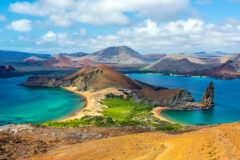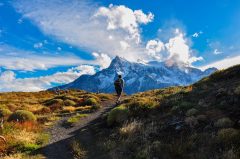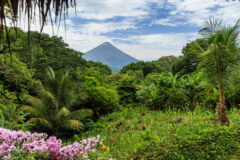A Night on Titicaca Island

Sitting in a small restaurant in the Peruvian town of Puno, after crossing the border from Bolivia the night before, we sipped our Inca Kolas through straws and talked about our plan for the next day.
We had organised to stay with a Quechua family on Amantani, one of the Islands on Lake Titicaca, and were due to leave bright and early the next morning. As to be expected, it is difficult to grow fruits on the island, at an altitude of 3,850m and with poor soil quality, not many crops are grown on the islands of Lake Titicaca. The trade for staying on the island is bringing the family you are staying with a big bag of fruit and vegetables. Some bring stationary and other educational supplies for the children, but by far the most appreciated gifts are simple fruits and vegetables, as this can be shared amongst the whole family.
We caught a ridiculously fun mototaxi, tuk-tuk, to the edge of the lake to catch our boat to the island, standing with a large group of other tourists on the dock – all of us comparing the haul of our black carrier bags from the local food markets and shops. We boarded our boat and crossed the blue waters to Amantani Island.
As the boat approached the dock, the women of the island dressed in heavy black shawls and skirts with colourful fine detailing, could be seen lining the water’s edge. This collection of Quechua mothers waited for us as we were designated a family by the boatman who had led our group of merry travellers across the waters. Then began the arduous task of climbing up the island, these are not reed islands floating on the lake, but solid rock islands, with steep hills!
Some people are fine with high altitude, but unfortunately I am not. Imagine walking through syrup in clothes soaked in mud. After 20 minutes of slow climbing we reached our families home. A small adobe built house around a third of the way up the island. We dropped off our bags and were invited in for some tea, a choice of black, camomile or coca (the coca leaf tea helps with the altitude).
After a short introduction to the home, and a little food, we went for another long climb up to visit one of the two peaks of the islands, Pacha Tata and the temple at the top. The long walk was interwoven by a talk from a local who told us about life on the island, and the deep traditions that the Quechua believed in. The ancient trail that winds up through the potato terraces to the temple is now paved and as you reach the last fifty metres from the top, the local women sell their weavings and woollen goods on the short stone walls that line the trail. My girlfriend and I had held off buying too many souvenirs but this restraint went out the window as we meet the ladies. It’s quite chilly up on the hill, but rather than recommend you to take an extra jumper – I advise purchasing a striped llama wool jumper made on the island, from the wool of the llamas and sheep that are dotted around the landscape on the top of this isolated rock on the world’s highest navigable lake.
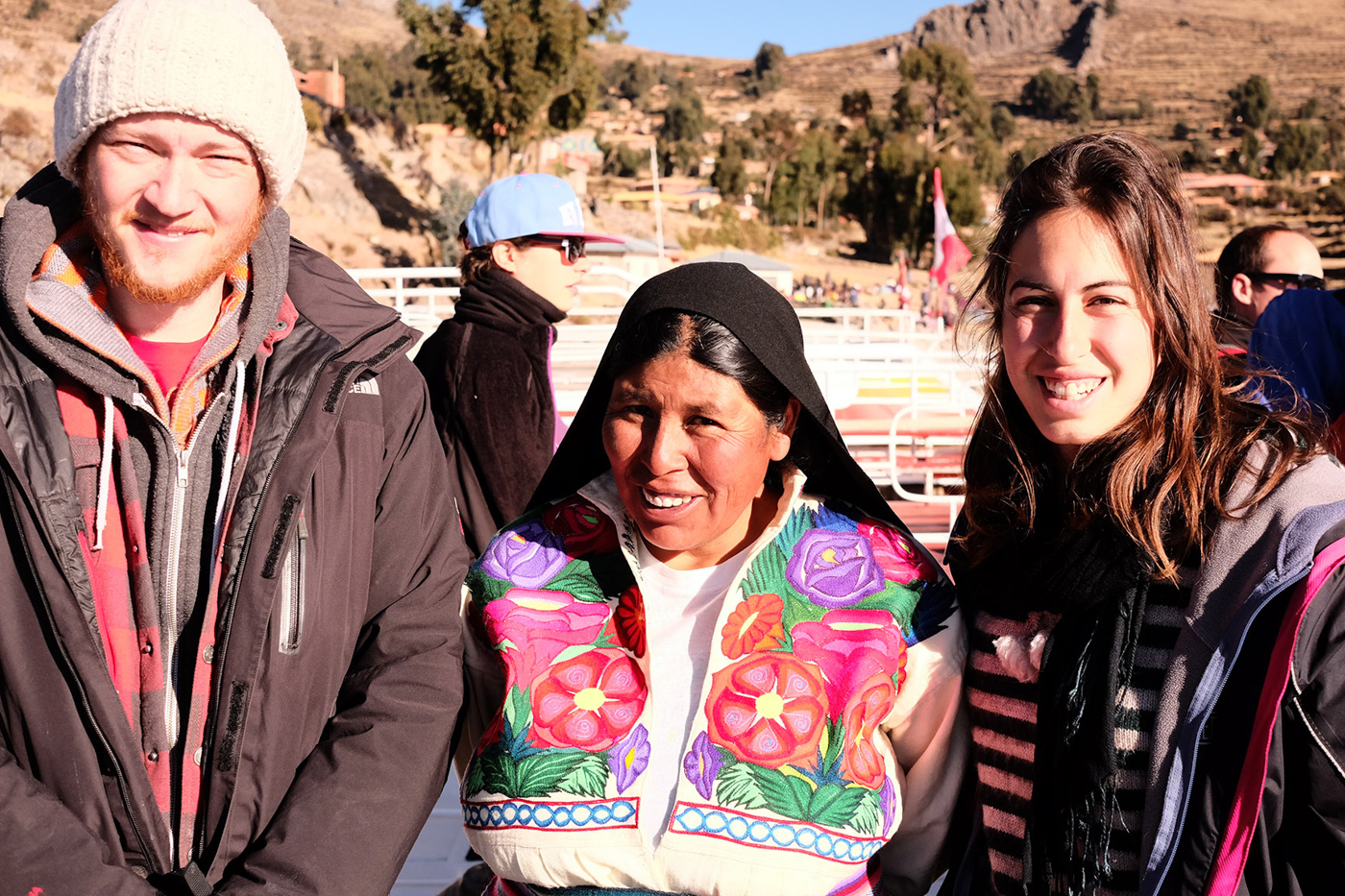
The temple is only open for a few days each year for the festivals held here around the end of January and are closed for the rest of the year. This doesn’t stop a tradition of taking a small rock from the bottom of the island and carrying it up to place into the surrounding wall of the temple and making a wish. The stone wall is littered with tiny pebbles squeezed into almost every available gap, but there’s still plenty of space to place yours, if you wish.
We weren’t the only ones up on the peak, and our large group of visitors to the island sat around one side of the temple and watched the reeds blowing in the wind as the sun disappeared behind the horizon. We all convoyed down to our respective homes and met the rest of the family. After some practicing of our Spanish and the introductions had finished, we gathered around a basic stove and were served dinner. A warm vegetable soup with rice and some bread, simple yet delicious.
That evening we were invited to come along to a dance night, with traditional music provided by islanders. We were given traditional clothes to wear, the ladies the same thick black dresses and beautifully embroidered shirts that greeted us at the shore earlier that day. I was given a thick heavy poncho by the father of our family, and we all headed down to the music hall. It seemed the father from our family was the drummer in the band and we were the first to arrive. Slowly, more and more families and more and more slightly bewildered tourists came into the hall. Soon the green hall was full, the music was thriving and everyone was spinning around having fun. As with many things of this nature, the chance to sit out at the side and watch as everyone else danced was not an option, however, thankfully the dance would last a couple of minutes then all would sit down, laugh and try to catch some breath. Dancing at altitude is very hard work. The band switched instruments and everyone had some water, the brave opting for beer or wine.
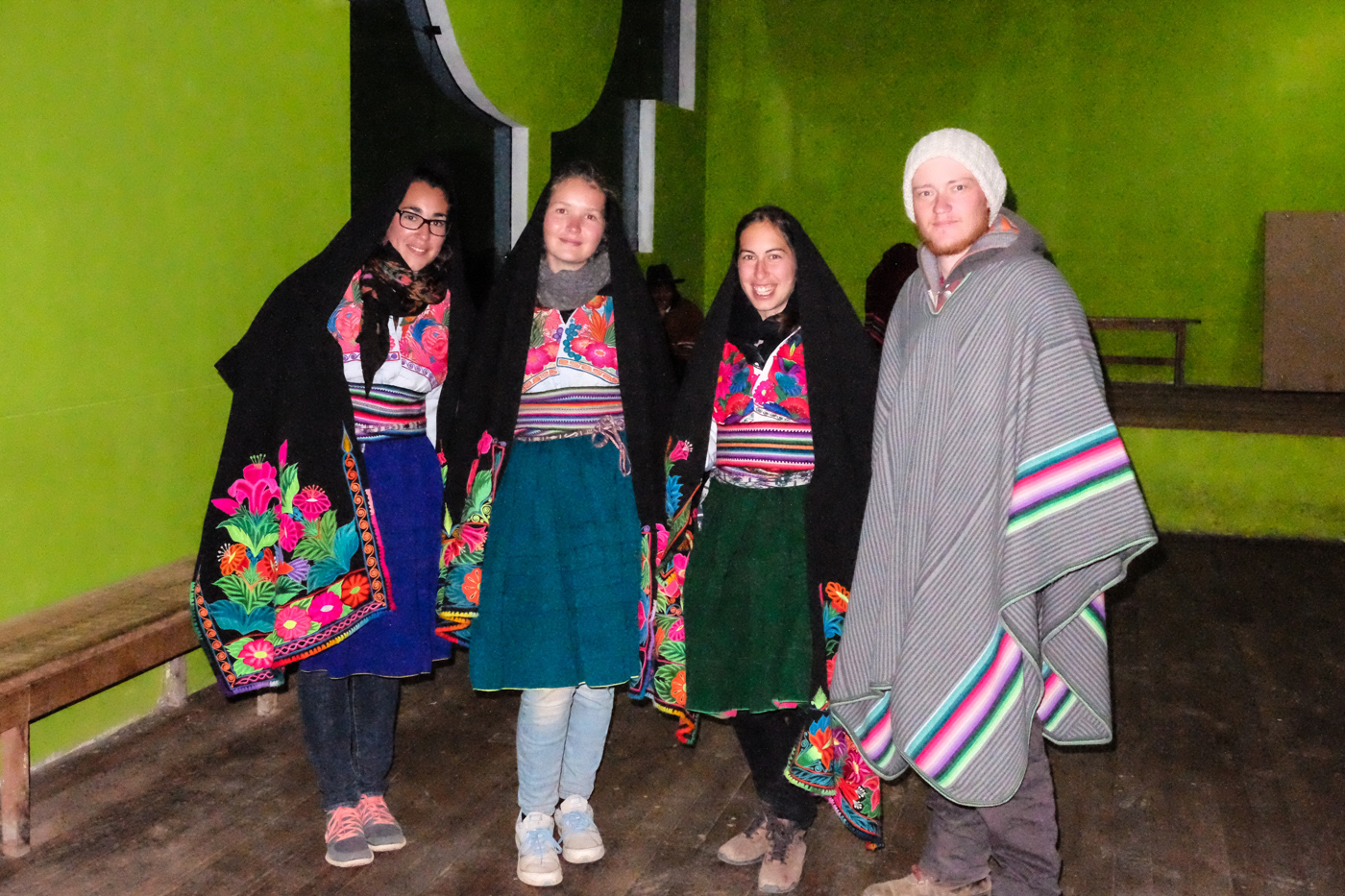
The entertainment went on, long into the night, and the next morning I’m sure there were a few nursing high altitude hangovers. We ate some frittatas for breakfast and gathered up our things to leave the island. After taking photographs together and thanking the family for their hospitality and entertainment we joined the slow line of tourists snaking back onto the boats. Once again the Quechua mothers lined the shore waving goodbye in the sharp sunlight. Little whispers and giggles on the air as our boat of visitors disembarked the dock for the main land. The bags of fruit had been replaced by smiles and anecdotes... and maybe a woven souvenir or two.
If you're tempted by this unique experience, we can arrange a Homestay on Lake Titicaca to fit into your holiday plans.
Tailor-made holidays
Flexible, custom-made holidays to Latin America created to match your exact requirements: our tailor-made itineraries are as unique as the clients for whom they are designed.
Design my tripPapagaio
Your edit for Latin American inspiration
Our exciting range of articles on Latin America explore everything from iconic destinations and lesser-known cultural gems to delicious traditional recipes. You’ll also find exclusive travel tips, first-hand client reviews and the chance to get your personal questions answered by our travel experts.
View Extraordinary Inspiration
